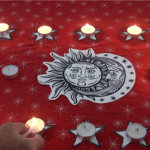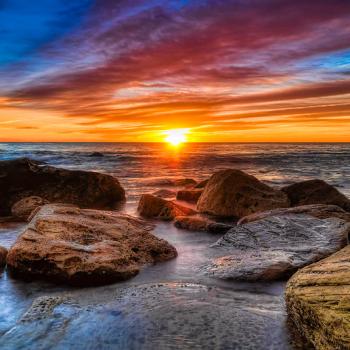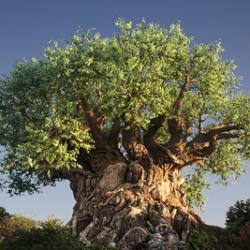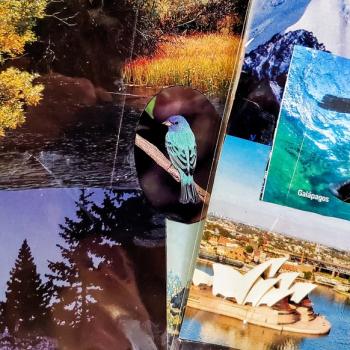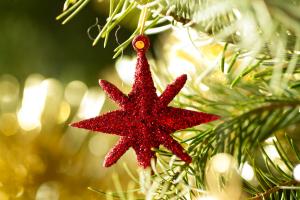
Yule or Alban Arthan meaning “Light of Arthur” or “Light of Winter” in my Druid path is Tuesday, Dec. 21 at 10:58 a.m. ET. It is the shortest day of the year and known to the mundane as the Winter Solstice. It is so deep in Pagan tradition that one can openly practice without anyone knowing.
We often discuss this topic in my CUUPs chapter Sacred Wheel at the Unitarian Universalist Congregation at Montclair, NJ. I tell them not to hide and to decorate their space. I have an altar I decorate for each sabbat, but when it comes to Yule, there is no holding back. It is right there in my bedroom and in my parents view.
Growing up a Catholic, all the Pagan aspects of the holiday appealed to me including the music. My favorite Christmas Carol as a child is still mine today. “Deck the Halls” actually mentions Yule a few times and references the symbols. Let’s take a look: “Deck the halls with boughs of holly…Troll the ancient Yuletide carol….See the blazing yule…” Another carol that mentions Yule is “The Christmas Song.”

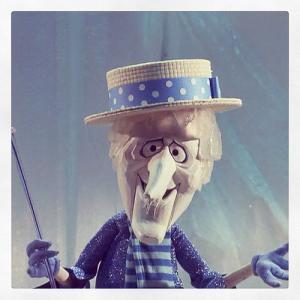
Most of my beloved childhood Claymation and cartoon movies are very Pagan, such as “Santa Claus is Comin’ to Town.” The brothers – Heat and Snow Miser in “The Year without a Santa Claus” should spark some familiarity. A cute fun spoof on the folklore of the battle of the Oak and the Holly kings. In case you do not know the legend, I will summarize. The Oak King – the divine child wins and rules until the Holly King defeats him at the Summer Solstice. Then they fight again and the Holly King rules until the Winter Solstice. The Oak King is the god of the waxing light; and the Holly King is the god of the waning light.
“Jack Frost” is another that I have always liked. There are more if you just pay attention to the symbols and the use of Mother Nature and magic.
I had a box of Christmas cards once that said, “Have a cool Yule.” Now though it seems harder to find cards with the term Yule on them. It is as if greeting card manufacturers seem to have forgotten the word.
Then the decorations for instance the mistletoe, evergreens and holly, which I mentioned earlier. These as we all know serve as a reminder that in the coming months we will enter spring. This will bring new life and nature will be green again.
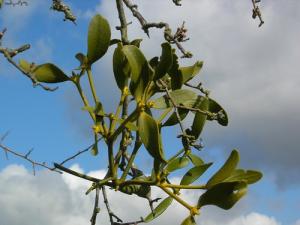
Mistletoe is a Druid symbol of peace and joy. In Gaelic, it is Uil-ioc, which means all heal. It is also for good luck, and historically believed to protect from fires, disease and lightning. Additionally, if enemies met under it they would form a temporary truce, laying down their weapons. Moreover, that old custom we know of kissing under the mistletoe, well it Druids considered it a fertility charm.
The Norse brought Evergreens indoors to serve as a reminder that the long cold winter was not forever. Victorians also did the same.
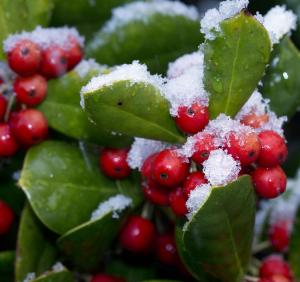
Deeper into the symbolism in my Druid path the holly represents the old solar year, the waning sun. Additionally, it is also for protection and luck. Celts offered the nature spirits a place to rest during the cold months by decorating their houses with evergreen branches.
As a journalist, I wrote a column for my town paper a few years ago on the origins of the Christmas tree. This tree predates Jesus Christ, more than 4,000 years before his birth. In Egypt, they celebrated with palm branches to celebrate the 12 months of the sun with a 12-day festival during the winter solstice. I will never forget showing my parents that story, and my dad’s response, “What’s wrong with Jesus.” Nothing was then – except he did not exist yet. Nothing is now, either. However, some of his followers, though, are another story. I was just shedding some light on the subject, no pun intended.
Druids lit their homes with candles to encourage the return of the sun. They also celebrated with bonfires to welcome its return.
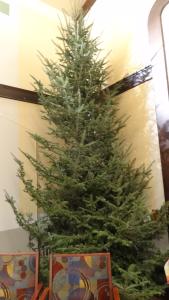
“The Yule log,” which WPIX plays every year on a loop and now often a rolled desert, is a Druid custom as well. The log would burn for 12 days before being extinguished and stored under a bed. In the spring, they would spread its ashes on the fields with the seeds. Sometimes they would make it into soap. Each year they would burn the previous year’s log with a new one. This symbolized light passing from one year to the next. Yule logs should be a gift, not purchased.
Another ancient tradition is gift giving. People say it’s Christmas but just as the tree, its origins too are not Christian. Yule was always a time for gift giving. Our ancestors gave children toys or games to be entertained with during those cold, remote winter nights. People would share secret projects for the coming year. Often a gift would be winter clothes to keep warm. Oh, and let’s not forget food, prepared with love. This all should be sounding familiar by now.
Food… oh, the traditions of food. Although I am Druid and possibly have a wee bit of Irish blood in me, I am very much Italian. Making homemade Italian cookies such as knots and struffoli – you know those honey balls covered in sprinkles is an absolute must in my house. We buy the struffoli, but one day I intend to make them. Moreover, the dinner…we do not go light on that. I always wondered why they sang about turkey in a Christmas carol. Turkey, as far as I know it, is for Thanksgiving only. In my house, dinner is some form of pasta with ricotta cheese – manicotti, stuffed shells, or ravioli or maybe lasagna. Oh, and the meat –braciole, meatballs, sausage, and neck bones.
Yes, Yule tradition runs deep, and those symbols are very Pagan. It is easy to enjoy the Christmas holiday, if you are the only Pagan celebrating. We are all welcoming the light in one way or another.
Blessed Yule!
Also see: A UU Pagan understanding of the Christian’s belief of sin & salvation



